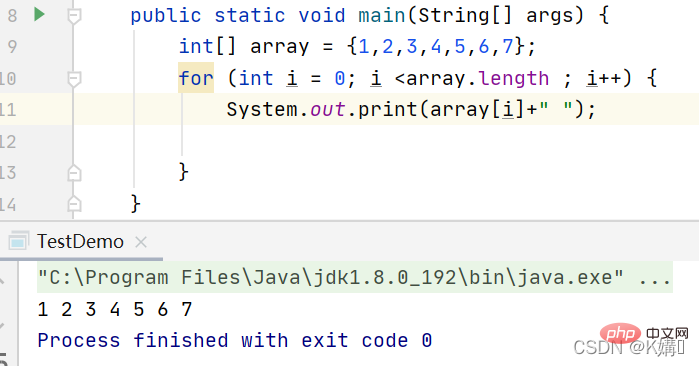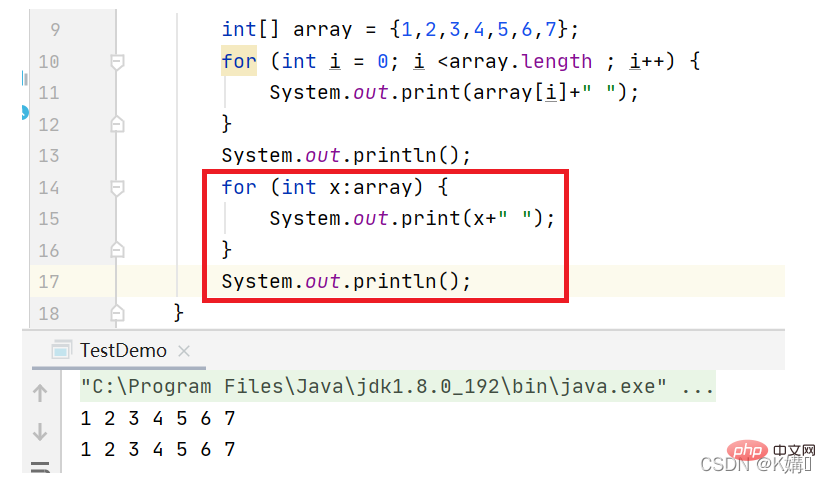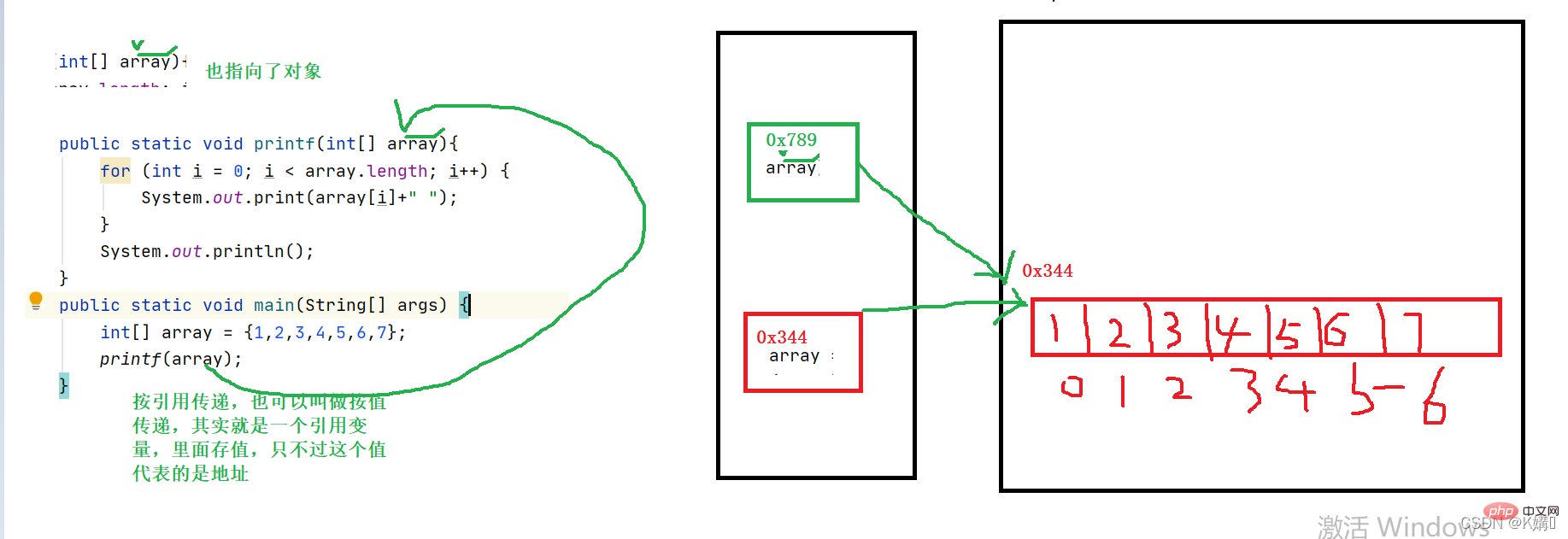Home >Java >javaTutorial >How to define and use Java arrays
Array: A collection that stores a set of data of the same data type .
int[]: int type array
double[]: double type array
Variables can be defined by type, such as :
int[] array, array is a variable of this type. This variable is a variable that stores a set of the same data.
Three ways to define arrays:

The first one:
int[] array = {1,2 ,3,4,5,6};Define an array and initialize it
Although new is not written, it is actually an object
Notes:
int[10] array = {1,2,3,4,5,6};Wrong writing, int[] belongs to type, no numbers can be added inside the square brackets, which is equivalent to destruction here its type.
Second type:
int[] array2 = new int[3];

Define array Uninitialized
Third type:
int[] array3 = new int[]{1,2,3,4,5,6};

Definition and initialization
The most commonly used of the three is the first one
Get Array length:

In Java, you can directly find the length of the current array through the array name array.length
Access array elements:

Access the element with index 4 in the array
Access the array element out of bounds:

The Java language directly reports an error when out of bounds
Change array elements:

By placing brackets in the array name, you can not only access the content of the subscript, but also write some data into the subscript
The first type: (for loop)











 ##Analysis example: What does the picture below represent
##Analysis example: What does the picture below represent

represents the reference of array2, pointing to the object pointed to by the reference of array1.
The following picture represents the meaning of the above example:

Note:
The quote points to the quote. This sentence is wrong. References can only point to objects
Does the reference have to be on the stack?
Not necessarily. Whether a variable is on the stack is determined by the nature of your variable. If it is a local variable, it must be on the stack. If not, for example, instance member variables are not necessarily on the stack.
public class TestDemo {
public static void swap(int[] array){
int tmp = array[0];
array[0] = array[1];
array[1] = tmp;
}
public static void main(String[] args) {
int[] array = {10,20};
System.out.println("交换前: "+array[0]+" "+array[1]);
swap(array);
System.out.println("交换后: "+array[0]+" "+array[1]);
}Print results:

/**
* 在原来的数组上扩大2倍
* @param array
*/
public static void enlarge(int[] array){
for (int i = 0; i <array.length ; i++) {
array[i] = array[i]*2;
}
}
public static void main(String[] args) {
int[] array = {1,2,3,4,5,6,7};
enlarge(array);
System.out.println(Arrays.toString(array));
}Print the result of each element in the array:

Enlarge the original array by twice the value In a new array
/**
* 把原来数组扩大2倍的值放在一个新的数组中
* @param array
* @return
*/
public static int[] func(int[] array) {
int[] ret = new int[array.length];
for (int i = 0; i < array.length; i++) {
ret[i] = array[i] * 2;
}
return ret;
}
public static void main(String[] args) {
int[] array = {1,2,3,4,5,6,7};
int[] ret = func(array);
System.out.println(Arrays.toString(ret));
}public static String myToString(int[] array){
String str = "[";
for (int i = 0; i <array.length ; i++) {
str = str+array[i];
if(i != array.length-1){
str+= ",";
}
}
str= str + "]";
return str;
}
public static void main(String[] args) {
int[] array = {1,2,3,4,5,6,7};
String str = myToString(array);
System.out.println(str);
}Print the result:

public static int maxNum(int[] array){
if(array == null) return -1;
if (array.length == 0) return -1;
int max = array[0];
for (int i = 1; i <array.length ; i++) {
if(max < array[i]){
max = array[i];
}
}
return max;
}
public static void main(String[] args) {
int[] array = {12,8,14,26,5,7,8};
int max = maxNum(array);
System.out.println(max);
}Print result:

public static int findNum(int[] array,int key){
for (int i = 0; i <array.length ; i++) {
if(array[i] == key){
return i;
}
}
return -1;
}
public static void main(String[] args) {
int[] array = {2,4,5,6,11,7,8,9};
System.out.println(findNum(array, 7));
}Print result:

二分查找的必要条件是必须有序的数列
public static int binarySearch(int[] array,int key){
int left = 0;
int right = array.length-1;
while(left <= right){
int mid = (left+right)/2;
if(array[mid] > key){
right = mid - 1;
}else if(array[mid] < key){
left = left + 1;
}else{
return mid;
}
}
return -1;
}
public static void main(String[] args) {
int[] array = {12,14,15,16,18,23};
System.out.println(binarySearch(array, 15));
}Print result:

The above is the detailed content of How to define and use Java arrays. For more information, please follow other related articles on the PHP Chinese website!